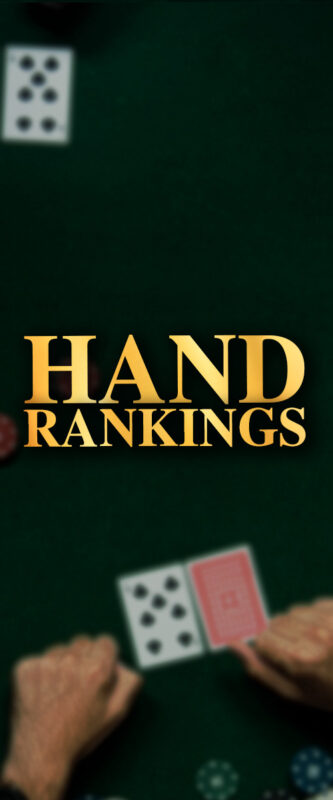
Poker Rules: A Comprehensive Guide
Understanding Poker
Poker is a popular card game played by millions of people around the world. It is a game of skill, strategy, and psychology, where players compete to win chips or money by forming the best possible hand using a combination of hole cards and community cards.
Basic Principles
The basic principles of poker revolve around hand rankings and betting rounds. Poker hands are ranked according to their strength, with the highest-ranking hand winning the pot. Betting rounds occur between the dealing of community cards, allowing players to wager chips based on the strength of their hand and their desired strategy.
Hand Rankings
Poker hands are ranked in a specific order, from the highest-ranking hand to the lowest. Understanding hand rankings is crucial for determining the winner of each hand. Here are the most common hand rankings:
1. Royal Flush
At the summit of hand rankings sits the illustrious Royal Flush. This is the ultimate hand, comprising the highest-ranking cards in sequential order and of the same suit. It consists of the Ace (A), King (K), Queen (Q), Jack (J), and 10, all belonging to the same suit. Achieving a Royal Flush is a rare and coveted feat in poker, signifying an unbeatable hand.
2. Straight Flush
Following closely behind the Royal Flush is the Straight Flush. This hand consists of five consecutive cards of the same suit. For example, a Straight Flush could be comprised of 5, 6, 7, 8, and 9 of hearts. While not as powerful as a Royal Flush, a Straight Flush still ranks high in the hierarchy of hands and is formidable in its own right.
3. Four of a Kind
Next in line is the Four of a Kind, also known as quads. This hand contains four cards of the same rank, accompanied by one unrelated card, known as the kicker. For instance, having four Kings with any other card would constitute a Four of a Kind. This hand showcases significant strength and is difficult to beat.
4. Full House
The Full House combines three cards of one rank with two cards of another rank. For example, a Full House could consist of three Queens and two Aces. The strength of a Full House is determined by the three-of-a-kind component, with higher-ranking sets trumping lower ones.
5. Flush
A Flush comprises five cards of the same suit, not in sequential order. The strength of a Flush is determined by the highest-ranking card among the five. In the event of a tie, the second-highest, third-highest, and subsequent cards are compared until a winner is determined.
6. Straight
The Straight consists of five consecutive cards of mixed suits. For example, a Straight could include 4, 5, 6, 7, and 8 of various suits. As with a Flush, the strength of a Straight is determined by the highest-ranking card in the sequence.
7. Three of a Kind
Three of a Kind, as the name suggests, consists of three cards of the same rank, accompanied by two unrelated cards. The strength of this hand is determined by the rank of the three matching cards.
8. Two Pair
A Two Pair hand contains two sets of cards of the same rank, accompanied by one unrelated card. For example, having two Jacks, two Queens, and an unrelated card constitutes a Two Pair. In the event of a tie, the highest-ranking pairs are compared first, followed by the lower-ranking pairs if necessary.
9. One Pair
One Pair comprises two cards of the same rank, accompanied by three unrelated cards. The strength of a One Pair hand is determined by the rank of the paired cards, with higher pairs trumping lower ones.
10. High Card
At the bottom of the hierarchy is the High Card, which occurs when none of the above-ranking hands are achieved. In this scenario, the highest-ranking card in a player’s hand determines its strength. If multiple players have High Card hands, the highest-ranking card among them wins.
Understanding the hierarchy of hand rankings is essential for making informed decisions during gameplay.
Betting Rounds
Poker games consist of multiple betting rounds, typically including pre-flop, flop, turn, and river. During each betting round, players have the option to check, bet, raise, or fold, depending on the strength of their hand and their desired strategy.
Poker Etiquette
In addition to understanding the rules of poker, it’s important to observe proper etiquette at the table. Here are some tips to keep in mind:
- Respect the Dealer: Follow the dealer’s instructions and refrain from arguing or disputing their decisions.
- Act in Turn: Wait for your turn to act before making any decisions or movements at the table.
- Keep Your Cards Visible: Always keep your hole cards visible to the other players and the dealer.
- Avoid Excessive Delay: Avoid unnecessarily delaying the game by taking too long to make decisions.
- Be Courteous: Treat other players with respect and refrain from making derogatory or offensive remarks.





